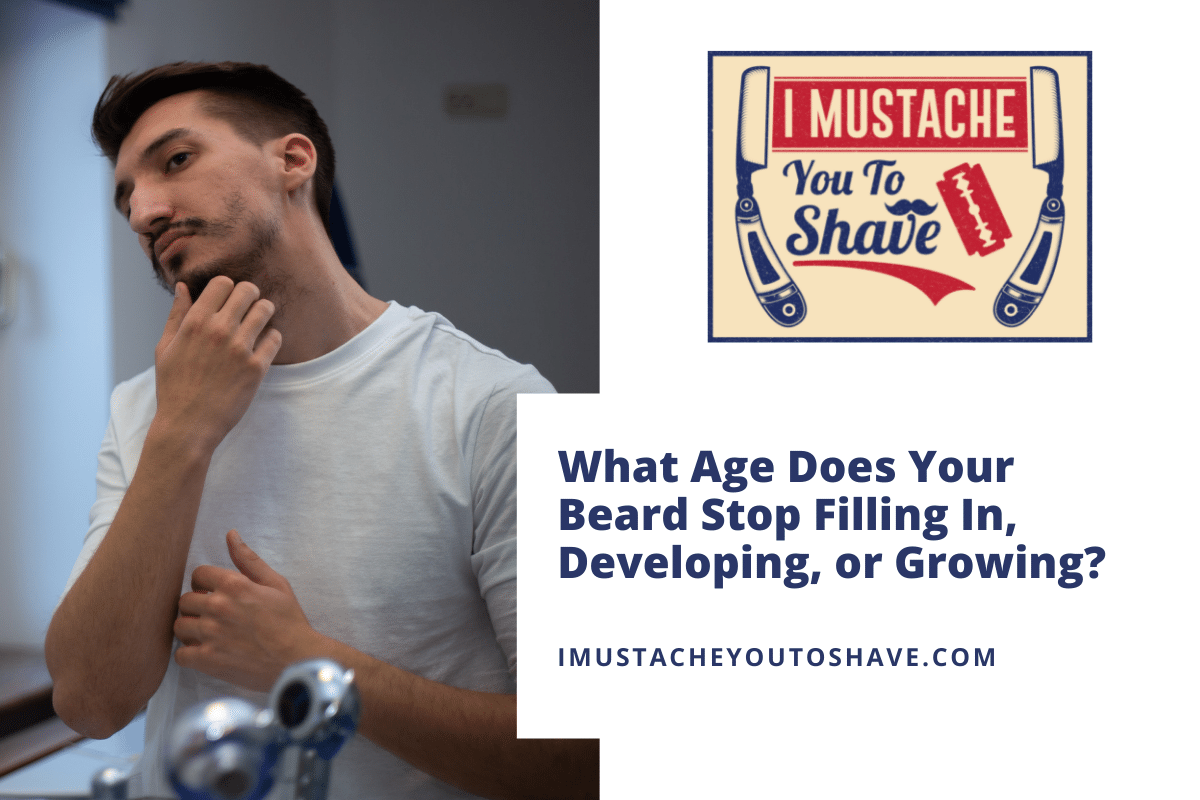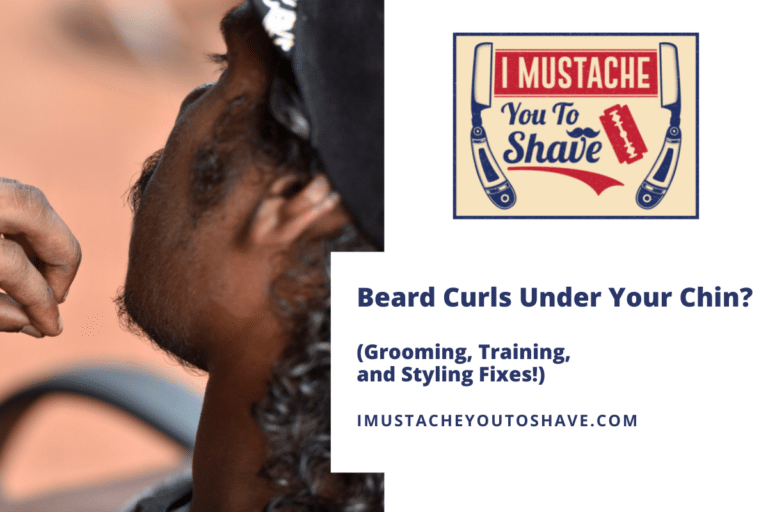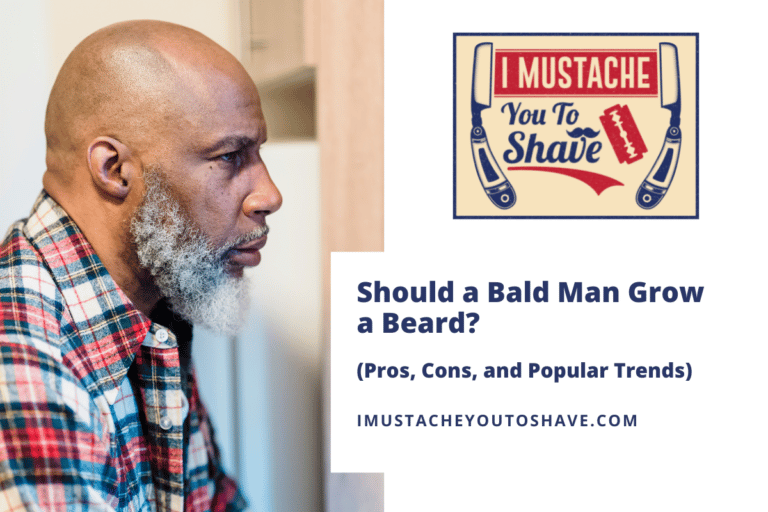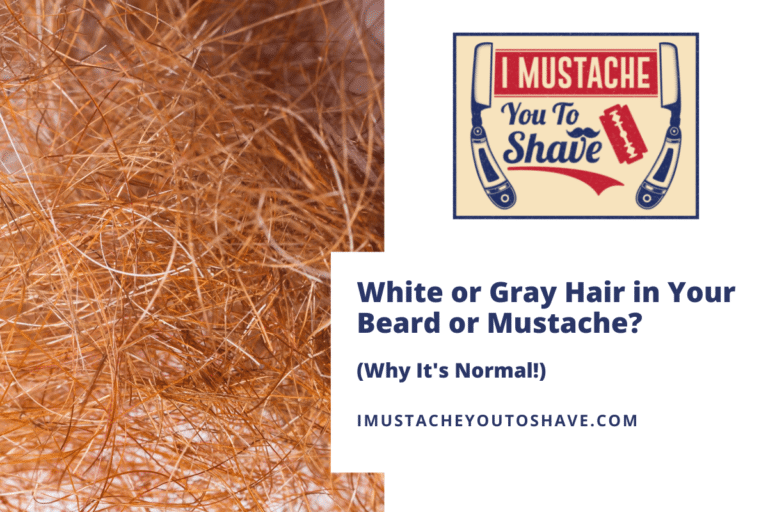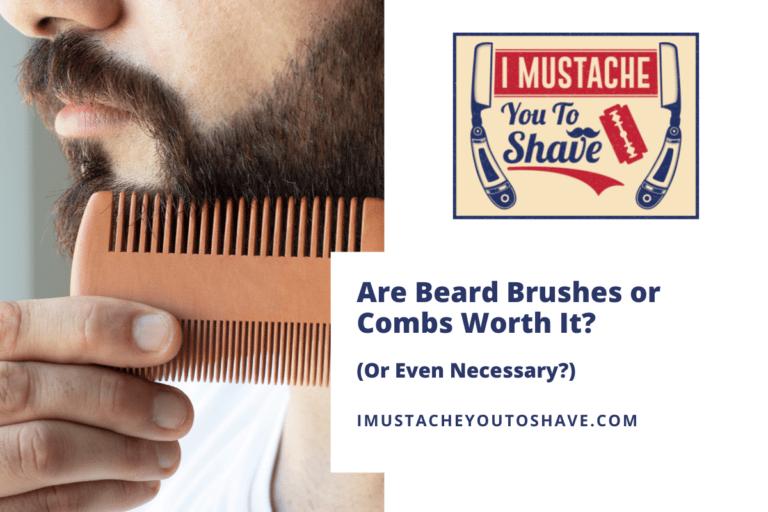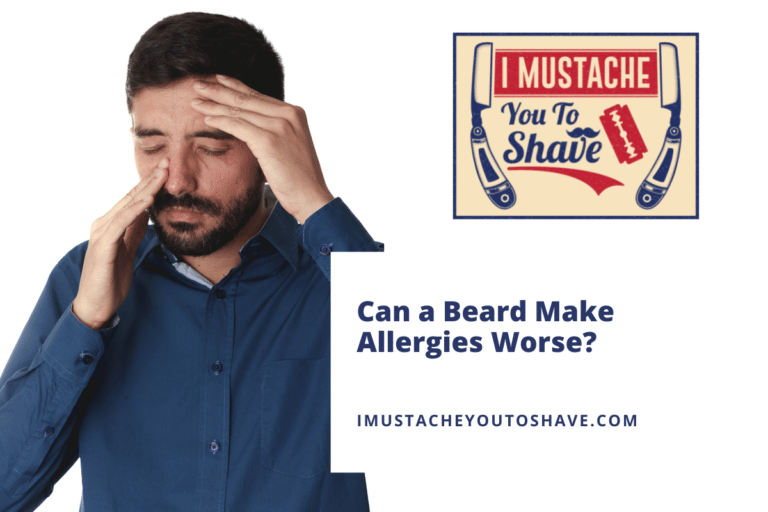What Age Does Your Beard Stop Filling In, Developing, or Growing?
Facial hair growth in young men is a rite of passage. It signals the start of puberty and is an outward sign of testosterone. It’s easy to see when a male’s beard growth begins, but when does it end?
For the majority of men, beard development after age 30 is rare but there isn’t a universal age when a man’s beard stops filling in, developing, or growing since individual genetics play a big role. . Facial hair growth is fueled by androgen testosterone which reaches its highest levels in the teen and young adult years with growth peaking around 18.
If you want to learn more about facial hair growth and what to do if you’re struggling with a patchy beard, read on!
How long does your beard keep filling in?
You are well on your way to growing a beard but see a few patches. Will they fill in? If you are under the age of 30, chances are good that they will.
For most men, the teens and twenties are the peak time for beards to fill in. With the beginning of puberty, facial hair begins to grow because of the influx of male androgens. Facial hair is a secondary sex characteristic affected by testosterone. Eventually, age, health, and lifestyle factors cause testosterone to begin its descent resulting in less hair growth.
Testosterone is one component of your beard growth, but, as long as you have developed secondary hair in other places like the underarms and groin, you probably have testosterone in the normal range.
Another important factor is genetics. Facial hair can grow faster or slower in large part due to your genes. Taking a look at the beard growth of other men in your family can give you clues to your own beard growth and development.
Is it normal to have a patchy beard at 20?
If you are in your early twenties and experiencing a patchy beard, don’t despair. You still have time to fill in those spots naturally.
It is normal to have a patchy beard at 20. Testosterone levels usually don’t peak until 18-19 years old. Many men will continue to see their beard hair grow throughout their twenties.
Will your beard fill in after 25?
The older you get, the less likely your beard bald spots will fill in, but there is still hope in your mid to late 20s. Testosterone levels remain relatively constant for a decade or more after their late teen peak.
It is possible for your beard to fill in after age 25, especially if one of your male family members experienced development in their late twenties.
Will your beard fill in after 30?
By age 30 and beyond, it becomes less likely that your beard will fill in on its own.
Once you hit your 30s, the chances of your beard filling in become more the exception than the rule. Testosterone levels begin a gradual descent after age 30.
Is it possible to stimulate beard growth and development?
If your beard isn’t filling in to your satisfaction, there are some options to jump-start growth.
Microneedling and Minoxidil can stimulate beard growth and development in some men.
Studies on both of these methods are small, yet promising.
Fun Fact: Microneedling was used as early as the 1900s to treat acne and scarring. Dermatologist, Ernst Kromayer, used the first microneedle with an electric motor in 1905.
Microneedling
Hair follicles all over our bodies are fed by blood vessels. Increased blood flow can stimulate hair follicles to produce keratin.
Microneedling is a procedure that stimulates hair follicles by making micro punctures in the skin. This process triggers collagen and keratin production as well as stimulates blood flow to the face leading to hair restoration.
Microneedling is performed with a derma-roller. Small needles, 1.0-2.5mm in size, puncture tiny holes in the skin. Collagen and keratin production increase as a healing mechanism.
This procedure has performed well in the treatment of hair disorders like alopecia. It has the added benefit of improving the appearance of scars and reducing wrinkles. Kits can be purchased for at-home use, or you can visit a dermatologist or aesthetician. In-office procedures use larger needles which have been shown to produce better results.
Minoxidil (Rogaine)
If the thought of tiny needles makes you squirm, another option for hair renewal is Minoxidil (which is the generic form of Rogaine).
Minoxidil is a topical lotion that has been studied extensively on the scalp to stimulate hair growth. It opens up blood vessels promoting better blood flow to the hair follicles, but there is limited data to support its effectiveness on facial hair growth.
Since Minoxidil use does have the potential for side effects, it’s best to consult a doctor before using it on your face. One small 2016 study showed marginal beard performance over a placebo while another study showed promising efficacy for eyebrow hair.
A more recent small study paired microneedling with Minoxidil to look at the effects on males suffering from alopecia. This study found patients using the combination therapy saw excellent results.
Factors that determine beard growth and thickness
If you continue to experience a beard that isn’t filling in as much as you would like, you can most likely blame it on your genetics.
The most common factors that determine beard growth and thickness are:
- Genetics
- Ethnicity
- Hormones
- Age
- Medical Conditions
Genetics
We are born with the number of hair follicles we will ever have. Each follicle goes through hair growth stages independent of the others. This explains why some hairs fall out, while others grow in.
Genetics is the leading determiner of beard growth patterns and thickness. Genes from both your mother and father will affect facial hair growth.
Asking your dad or granddad about their beard experiences can give you valuable insight into your own. If their beards filled in mid-20s, there’s a good shot yours will too.
Ethnicity
Ethnicity is another determiner of beard growth that we can’t control.
Ethnicity plays a role in beard growth and thickness. Caucasians, especially those of Mediterranean descent, have the densest hair while Asians have the least dense. Other ethnicities fall along the spectrum.
Hormones
Studies show that the majority of men have normal testosterone levels. However, if you are experiencing very slow or no facial hair growth and your genetics and ethnicity don’t provide any explanations, it’s smart to have your levels checked out.
Testosterone is the main androgen hormone responsible for facial hair growth. The ability of the hair follicles to convert testosterone into dihydrotestosterone affects the rate of growth.
Lifestyle habits like smoking, poor diet, inconsistent exercise, stress, and taking certain medications can have a negative effect on testosterone.
Age
As we’ve seen above, age does influence facial hair growth. The prime time for your beard to fill in is your late teens and 20s.
Starting with puberty, facial hair growth can continue throughout the 20s. By age 30, androgenic hair growth slows down mainly due to the gradual decline in testosterone.
As you age, you may also notice color changes in your beard as follicles lose pigments.
Medical Conditions
Two percent of the population suffers from a lack of hair growth in patches across the body. This condition is called alopecia areata. It can occur anywhere there is normal hair growth. When it occurs on the face, it’s referred to as alopecia areata barbae.
Alopecia areata barbae is an autoimmune condition that causes cells to attack the hair follicles resulting in hair loss and bald patches.
Many men suffer from this condition indefinitely while others see it come and go. It is difficult to treat and some doctors use microneedling and Minoxidil as therapies.
How to trim and groom a patchy beard
Beard complaints are common among men. Some wish for fuller beards, while others wish they could slow down fast growth. The good news is that there are many tricks and tools that can hide or reduce imperfections.
There are ways to trim and groom your beard to make it appear less patchy. The keys to make your beard look better are to let it grow and keep it trimmed and shaped.
The right tools and products are essential.
Let it grow
Sometimes you just have to let your beard grow without interference.
If you are growing a beard for the first time, experts recommend giving it 6-8 weeks before you trim.
This allows you to see how it develops naturally.
Trim and shape
Once you have hair growth to work with, getting a professional trim and shape can start your beard style off on the right foot.
If you have a certain style in mind, take pictures to a barber specifically trained in beard trimming. They can give you pointers on how to keep it looking good at home.
Recommended beard trimmers
A good beard trimmer is a must to keep your beard looking its best at all times.
If you’re ready to pick up a trimmer to tame your beard, check out one of these:
- The Baron & Co trimmer is highly-rated for its precision and ability to adjust the cutting length without using guards.
- This Hatteker trimmer is a less expensive option but charges quickly and performs intricate detail work to keep your beard perfectly groomed.
How to wash and care for a patchy beard
Your beard takes special care to keep it in top shape, especially if you’re dealing with patchiness.
Washing, hydrating, and moisturizing your patchy beard can keep it looking well-maintained and draw attention away from imperfections.
Some products claim to make hair grow faster or thicker, but results are mixed. If it sounds too good to be true it probably is.
Beard washing
Don’t call unwanted attention to your beard imperfections with dirt and oil.
Keeping your beard clean with regular washing will not only help the appearance but will maintain your hair’s health.
Scalp hair shampoos can be overly drying, so use a gentle wash made specifically for your beard and sensitive face area. This Cremo volumizing beard wash receives rave reviews.
Hydrate and moisturize
Our beards can take a beating from the sun’s rays and other environmental factors. Brittle hairs can look scraggly and even break off.
Apply good beard oil to replenish lost moisture and add shine.
How to style a patchy beard
If you still have some patches on your face, don’t give up completely on your bearded dreams. While a full beard may be out of the question, there are many ways you can work with your natural hair growth to keep facial hair looking good.
There are many popular beard styles that are perfect for patchy facial hair. The stubble, chin-strap, and goatee styles are versatile and work with a variety of hairstyles and facial shapes.
Even celebrities deal with less-than-stellar beard growth. Let’s look at some popular styles ideal for slow facial hair growth.
Patchy beard styles
Embrace your positive hair growth while minimizing the problem areas with these popular beard styles ideal for patchy beards.
The Stubble

When polled, women preferred the stubble look to a full beard. This is great news if thick, long hair isn’t in your genetic makeup. This style is easy to maintain, keeping it trimmed close to the face. It’s versatile too. You have the ability to switch easily between light and heavy stubble.
The Chin-Strap
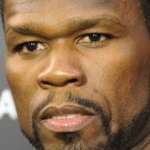
If you experience patches on your cheeks only, the popular chin-strap beard would be a perfect choice. The cheek area is kept bare while the hair grows along the chin line up to the sideburns.
The Goatee

Another option if your cheek hair is sparse is the goatee. Allow the chin area to grow longer while shaving the cheek area. You also have a lot of versatility with this style. You can keep your beard short or let it grow long.
Drying
If your beard is long enough, you can cover small patches with the correct hair drying technique.
Use a natural bristle brush and blow damp hairs in the direction you want them to go. Longer hairs can cover thinner areas underneath. Make sure to use low heat to avoid damage.
Another volume trick is to use a small round brush while blow-drying to slowly pull the hairs away from your face first, then finish in the downward direction. This adds volume where you need it.
Balms, waxes, and styling products
The styling product you use can aid in keeping beard hairs exactly where you want them.
Balms provide a soft hold while waxes provide a stronger one. After drying, apply your styling product of choice to keep the hairs in place. You can arrange hair so that it covers any small patches. This will give the illusion of thicker hair.
Balms can also be used for added moisture and can replace or be used in combination with beard oil if you need extra hydration.
Combing and shaping
The right tools can make a big difference in the appearance of your beard.
Boar and badger bristle brushes are the best at volumizing beard hairs. Combs are useful to detangle longer beards, and they also help stimulate the skin encouraging hair growth.
Brushes and combs help distribute oil and styling products evenly.
Steps to make a patchy beard look fuller
You are armed with all of the grooming and styling products you need. Let’s look at the process to make a patchy beard look its best.
Follow these 4 steps to help your beard look thicker and fuller:
- Take care of yourself – Fueling your body with the right vitamins and minerals will encourage blood flow and sufficient testosterone levels. Reducing stress, exercising consistently, and getting enough rest will ensure your hair follicles have a fighting chance.
- Use the correct tools – Knowing how to use the correct styling tools and products is crucial to beard success. You might have to experiment at first, but with a little trial and error you will find the perfect routine to achieve the fullest beard possible.
- Keep up with maintenance – Regular trims and attention to cleansing and hydrating will accentuate the positives of your style instead of drawing attention to the negatives.
- Choose a complimentary style – Relax and embrace your natural look. Choose a style that complements your beard growth pattern. You’ll look good without a lot of fuss. Look to celebrities, sports figures, and friends for inspiration. Visit an experienced barber if you need additional help finding your signature style.

